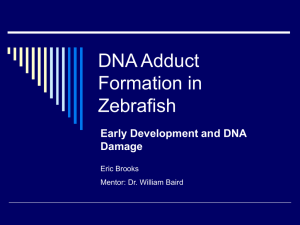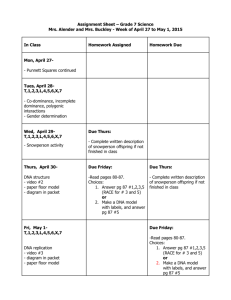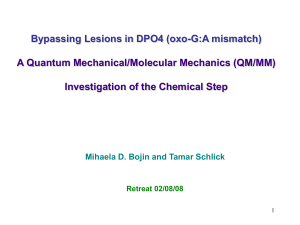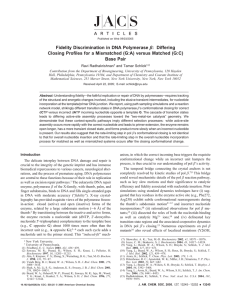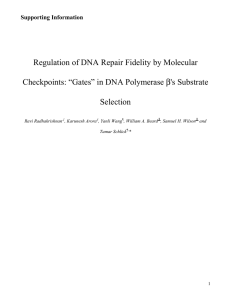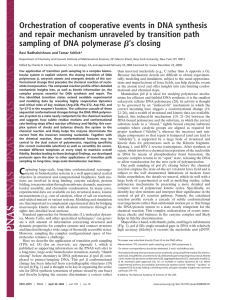Insights into the Conformations of Arylamine
advertisement
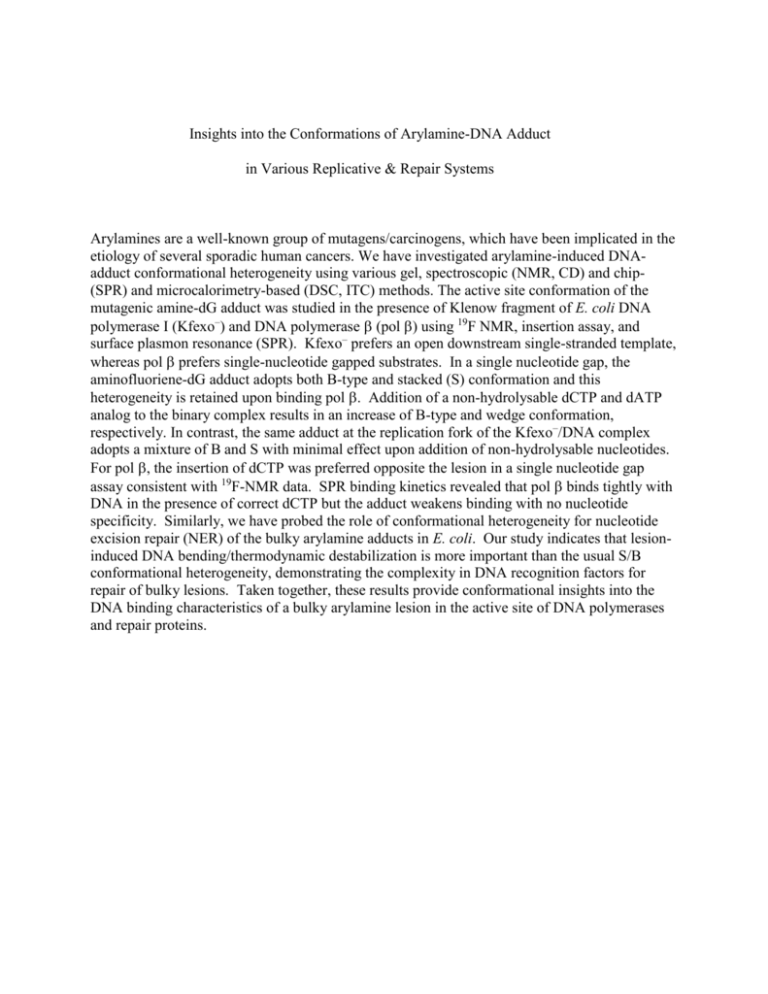
Insights into the Conformations of Arylamine-DNA Adduct in Various Replicative & Repair Systems Arylamines are a well-known group of mutagens/carcinogens, which have been implicated in the etiology of several sporadic human cancers. We have investigated arylamine-induced DNAadduct conformational heterogeneity using various gel, spectroscopic (NMR, CD) and chip(SPR) and microcalorimetry-based (DSC, ITC) methods. The active site conformation of the mutagenic amine-dG adduct was studied in the presence of Klenow fragment of E. coli DNA polymerase I (Kfexo–) and DNA polymerase (pol ) using 19F NMR, insertion assay, and surface plasmon resonance (SPR). Kfexo– prefers an open downstream single-stranded template, whereas pol prefers single-nucleotide gapped substrates. In a single nucleotide gap, the aminofluoriene-dG adduct adopts both B-type and stacked (S) conformation and this heterogeneity is retained upon binding pol . Addition of a non-hydrolysable dCTP and dATP analog to the binary complex results in an increase of B-type and wedge conformation, respectively. In contrast, the same adduct at the replication fork of the Kfexo–/DNA complex adopts a mixture of B and S with minimal effect upon addition of non-hydrolysable nucleotides. For pol , the insertion of dCTP was preferred opposite the lesion in a single nucleotide gap assay consistent with 19F-NMR data. SPR binding kinetics revealed that pol binds tightly with DNA in the presence of correct dCTP but the adduct weakens binding with no nucleotide specificity. Similarly, we have probed the role of conformational heterogeneity for nucleotide excision repair (NER) of the bulky arylamine adducts in E. coli. Our study indicates that lesioninduced DNA bending/thermodynamic destabilization is more important than the usual S/B conformational heterogeneity, demonstrating the complexity in DNA recognition factors for repair of bulky lesions. Taken together, these results provide conformational insights into the DNA binding characteristics of a bulky arylamine lesion in the active site of DNA polymerases and repair proteins.
